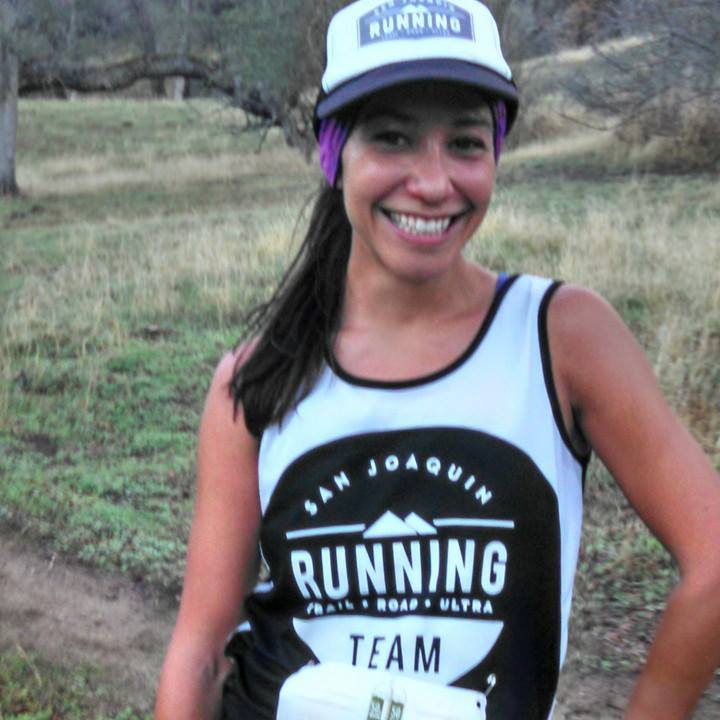- This was printed in September of 2013 in The Madera Tribune, a newspaper in Madera, California. This was the 20th installment of my weekly column, Mind Over Miles.
“Barefoot” or minimalist running is a hot topic of debate among runners. The theory is
that humans were born to run barefoot, with a natural forefoot to midfoot strike, which
means landing and pushing off of the ball of the foot, lessening impact on joints.
Traditional running shoes, with all of their cushioning and support, cause many runners to
develop a heel strike with their heel hitting the ground first, causing heavy impact on the
joints.
Presented with only that information, barefoot running would seem like the better option.
But that’s just the beginning of the debate.
Traditional shoe wearers argue that humans were born to run on soft grass and sand, but
in the modern world we have paved roads and concrete sidewalks. To adapt to these
harder surfaces, humans invented cushioned stability shoes.
But, barefoot runners argue, these comfy shoes have made runners’ legs lazier and
weaker. It takes a lot of strength and flexibility to run the “right” way, with a forefoot
strike. One mile in a pair of Vibram Five Fingers (or what non-runners would call toe-
shoes) will show you that you need a whole lot of calf strength to be a “barefoot” runner.
(I put barefoot in quotation marks because most barefoot runners don’t actually run with
bare feet, but rather a shoe with full flexibility and absolutely no support that essentially
just provides a layer of protection between the foot and the ground.)
After a lot of research and a test run in some Vibrams, I became a “barefoot” runner
myself. But it didn’t happen overnight.
Transitioning to barefoot shoes is a slow process. Even now, seven months into it, I run
no more than seven miles in my barefoot shoes at a time. If I’m going to run farther than
that, I am sure to wear minimalist shoes.
Minimalist shoes provide slightly more support than barefoot shoes and are used to
transition from traditional shoes to barefoot running. Minimalist shoes are highly flexible,
but have a “drop” of a few millimeters from heel to toe. A barefoot shoe has “zero drop,”
meaning it is completely flat from heel to toe. When running in minimalists (I have a pair
of Reeboks and a pair of Nike Free 5.0s), I’m careful to concentrate on my form,
ensuring that I’m still forefoot or at least midfoot striking to aid the transition.
According to my Nike+ stats, (more on that in the next column) I’ve logged nearly 200
miles in minimalist shoes and just 57 miles in barefoot shoes. At this slow transition
pace, I doubt I’ll be able to wear barefoot shoes for the Santa Rosa Marathon in August.
I am thoroughly happy with my choice to jump on the barefoot bandwagon.
Throughout middle and high school, I suffered shin splints, achy knees and hips and sore
muscles throughout cross country and track seasons. I’d end nearly every practice with
bags of ice taped to my shins and/or knees. Back then I didn’t know a thing about
minimalist or barefoot running. I wish I had!
After transitioning to barefoot/minimalist running, I ran injury-free — until the week of
my half-marathon. My shins never complained, even after the longest, hilliest runs. My
knees and hips didn’t bother me. My barefoot shoes only caused soreness in my calves
that tell me that they’re getting stronger from forefoot striking.
(Although I have a tight left IT band now that rubs against my knee and causes pain, I
really feel it is not a result of “barefoot” or minimalist running, but rather a too-fast
increase in mileage.)
There’s no “right” shoe or running form for every runner. You have to find what works
for you. I love my six-ounce, flat New Balance Minimus shoes, but others may swear by
their full-supportive stability shoes, like the popular Brooks Adrenaline or Mizuno Wave
Inspire.
Barefoot running just made sense to me. It seemed natural and healthy. As I run on all
surfaces — grass, dirt, gravel, road and sidewalk — my foot is protected, but I can feel
every little rock or stick I’m running over and I know these little variances are
strengthening the muscles in my feet.
My new mid- to forefoot strike makes me feel like a swift animal, leaping over obstacles
and climbing hills. (My running group has apparently seen what I’m feeling, nicknaming
me “Gazelle.”)
I feel like I’m running the way I was meant to.
